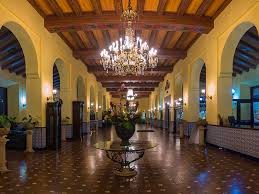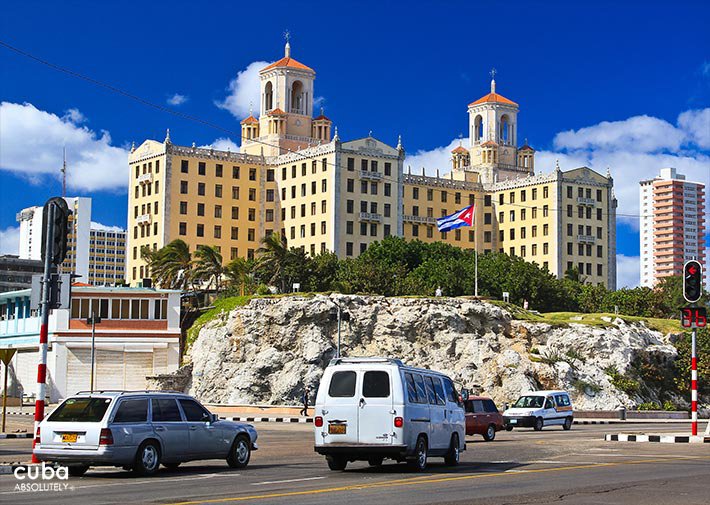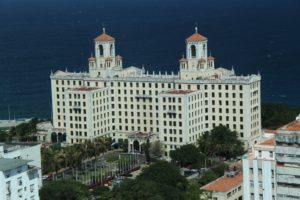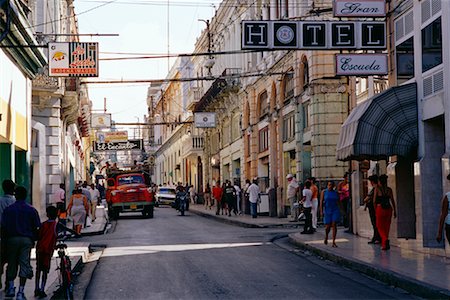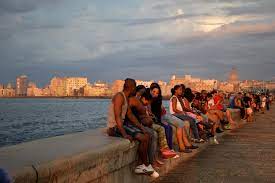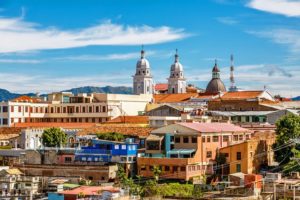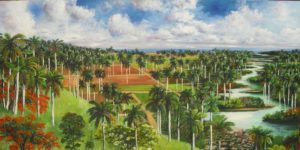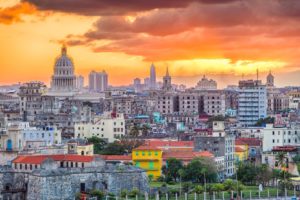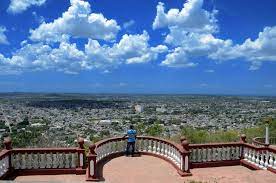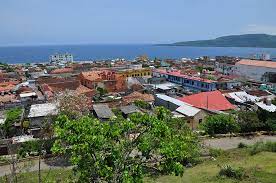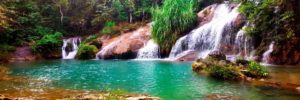THE NATIONAL HOTEL, HAVANA, CUBA, IS THE MOST MAJESTIC AND HISTORICAL ON THE ISLAND. PHOTOS/VIDEOS
The “Hotel Nacional” de Cuba is a historic eclectic Spanish-style hotel in Havana, Cuba, inaugurated in 1930. Located in front of the sea in the Vedado district, it is located on the Taganana hill, offering impressive views of the sea and the city.
The National Hotel was designed by the New York architecture firm McKim, Mead, and White, financed by the National City Bank of New York, and built-in fourteen months by the American engineering firm Purdy and Henderson. The structure contains a mix of styles, including Sevillian, Roman, Moorish, and Art Deco. The Palladian-style entrance portico has two stylized column capitals and quoins of coral stone.
 VIDEOS- EL HOTEL NACIONAL, HAVANA, CUBA..
VIDEOS- EL HOTEL NACIONAL, HAVANA, CUBA..
THE STUNNING “NATIONAL HOTEL” IN HAVANA, CUBA.
The Hotel Nacional preserves the aura of an era. It has its own tradition and stamp. Distinction, elegance, and luxury are combined with efficient services in a facility that over the years has welcomed guests such as Winston Churchill and King Edward VIII of England; Ava Gardner and Marlon Brando, Graham Greene and García Márquez, Robert Redford and Steven Spielberg, and many other celebrities, including María Félix, Libertad Lamarque, Jorge Negrete, Pierre Cardin, Nat King Cole … Opened in 1930, now 90 years ago, the Hotel Nacional de Cuba, the most majestic and imposing on the island, is simply classic.
It rises on a rocky promontory at the entrance of the Havana neighborhood of El Vedado, which makes it a must-see in the urban landscape of the capital, and that location, in what was the seat of the battery of Spanish cannons de Santa Clara, makes the hotel enjoy an unsurpassed view of the city and the sea, with which it integrates because its front gardens are projected towards the city environment while the rear gardens of this very beautiful building that combines the eclectic and the modern in its architecture, with the presence of art deco and the so-called Cuban colonial style.
An ancient legend is associated with the place where the Hotel Nacional de Cuba stands. Under the rock where its foundations sink there were several caves, among them the very famous Taganana cave, so-called because, it is said, in the 16th century it served as a refuge for an Indian of the same name, which inspired a story by Cirilo Villaverde, the most important novelist of colonial Cuba. That cave no longer exists, but yes, under the gardens, the tunnels that were drawn for the defense of Havana in the days of the Rocket Crisis of October 1962 and that are today another of the Hotel’s attractions.
SUMMARY OF A CUBAN RELIC
The Hotel Nacional has always offered its guests and visitors a whole repertoire of places where they can have a good time since its founding in 1930, 90 years ago.
If it is a question of restoration, the Comedor de Aguiar is a great luxury, with its extensive wine list and its unique way of preparing red meat and seafood; a restaurant with international and Cuban haute cuisine, and not a few surprises in store for El Barracón, in the Hotel gardens, specializing in Creole food.
The Executive Floor, on the sixth floor, is ideal for businessmen who want to settle in with the comfort and representativeness they require, as well as for the organization and smooth running of their professional tasks, while the Vedado and Taganana rooms and the Four rooms of the Apartment de la República guarantee the necessary facilities for events and conventions. The Concierge and Room Service work 24 hours a day. The bars satisfy the demands of the most demanding drinkers and also those who want to get closer to the variety of Cuban cocktails, and the Parisién cabaret, with its good food and dazzling shows, encourages fun and relaxation in an unforgettable atmosphere.
They are very celebrated at the Hotel Nacional de Cuba, which is, on the other hand, each year the permanent headquarters of the International Festival of New Latin American Cinema, concerts of traditional Cuban music, and water ballet shows. The national culture lives in the spaces of the installation. There are expo-sales of objects from the Cuban Fund of Cultural Assets, its buffet table exhibits tablecloths designed by 70 consecrated Cuban painters and around 300 artistic pieces of heritage value are displayed in its rooms. The Gallery of Fame, with the portraits of the most illustrious guests of the Hotel, encourages a walk through the history of the facility.
For accommodation, there are 464 rooms. Of these, 16 are double suites, and it also has a presidential suite, equipped with all these capacities with the facilities and comfort of a five-star hotel. Very popular are the gym areas.
You cannot write the history of Havana if you exclude the Hotel Nacional de Cuba. Events of the first order took place there. A President of the Republic, who would be so only for six hours, took the oath by candlelight in one of his rooms, 412, in 1934. And there, in 1946, it was celebrated, summoned, and presided over by Lucky Luciano, the great reunion of the North American mafia. Meyer Lansky, the so-called “Financier of the Mafia”, had as the center of his Havana ancestry this simply classic Hotel that now celebrates the great 90th Anniversary of its founding.
EL HOTEL NACIONAL, HABANA, CUBA, EL MÁS MAJESTUOSO E HISTORICO DE LA ISLA. PHOTOS/VIDEOS
El Hotel Nacional de Cuba es un histórico hotel de estilo ecléctico español en La Habana, Cuba, inaugurado en 1930. Ubicado frente al mar en el distrito del Vedado, se encuentra en el cerro Taganana, ofreciendo impresionantes vistas del mar y la ciudad.
El Hotel Nacional fue diseñado por la firma de arquitectura neoyorquina McKim, Mead and White, financiado por el National City Bank de Nueva York, y construido en catorce meses por la firma de ingeniería estadounidense Purdy and Henderson. La estructura contiene una mezcla de estilos, incluidos el sevillano, el romano, el morisco y el art déco. El pórtico de entrada de estilo palladiano tiene dos capiteles de columna estilizados y quoins de piedra coralina.
EL IMPONENTE HOTEL NACIONAL EN LA HABANA, CUBA.
El Hotel Nacional conserva el aura de una época. Tiene tradición y sello propios. La distinción, la elegancia y el lujo se combinan con la eficacia de los servicios en una instalación que a lo largo de los años acogió a huéspedes como Winston Churchill y el rey Eduardo VIII, de Inglaterra; Ava Gardner y Marlon Brando, Graham Greene y García Márquez, Robert Redford y Steven Spielberg y muchísimos otros famosos, entre los que destacan María Félix, Libertad Lamarque, Jorge Negrete, Pierre Cardin, Nat King Cole… Inaugurado en 1930, hace ahora 90 años, el Hotel Nacional de Cuba, el más majestuoso e imponente de la Isla, es, sencillamente, clásico.
Se levanta sobre un promontorio rocoso a la entrada de la barriada habanera de El Vedado, lo que lo convierte en un punto visual obligado en el paisaje urbano de la capital, y esa ubicación, en lo que fue el asiento de la batería de cañones españoles de Santa Clara, hace que desde el hotel se disfrute de una vista insuperable de la ciudad y del mar, con los que se integra pues sus jardines delanteros se proyectan hacia el ámbito citadino mientras que parecen internarse en las aguas del golfo los jardines traseros de esta edificación hermosísima que conjuga en su arquitectura lo ecléctico y lo moderno, con presencia del art deco y el llamado estilo colonial cubano.
 VIDEOS- EL HOTEL NACIONAL por Dentro…
VIDEOS- EL HOTEL NACIONAL por Dentro…
Una antigua leyenda se asocia con el lugar donde se alza el Hotel Nacional de Cuba. Debajo del peñón donde hunde sus cimientos hubo varias cavernas, entre ellas la muy célebre cueva de Taganana, llamada así porque, se dice, sirvió en el siglo XVI de refugio a un indio de igual nombre, lo que inspiró una narración de Cirilo Villaverde, el más importante novelista de la Cuba colonial. No existe ya esa gruta, pero sí, bajo los jardines, los túneles que para la defensa de La Habana se trazaron en los días de la Crisis de los Cohetes de octubre de 1962 y que son hoy otro de los atractivos del Hotel.
RESUMEN DE UNA RELIQUIA CUBANA
El Hotel Nacional siempre ha brindado a sus huespedes y visitantes todo un repertorio de sitios donde pasarla bien y en grande desde su fundación en 1930, hace ya 90 años.
Si de restauración se trata, de gran lujo es el Comedor de Aguiar, con su extensa carta de vinos y su manera única de preparar las carnes rojas y los mariscos; un restaurante de alta cocina internacional y cubana, y no pocas sorpresas depara El Barracón, en los jardines del Hotel, especializado en comida criolla.
El Piso Ejecutivo, en la sexta planta, es ideal para hombres de negocios que desean instalarse con la comodidad y la representatividad que requieren, así como para la organización y buena marcha de sus quehaceres profesionales, en tanto que las salas Vedado y Taganana y los cuatro salones del Apartamento de la República garantizan las facilidades necesarias para eventos y convenciones. La Conserjería y el Servicio de Habitaciones funcionan las 24 horas. Los bares satisfacen las exigencias de los bebedores más exigentes y también de los que quieran acercarse a la variedad de la coctelería cubana, y el cabaret Parisién, con su buena mesa y espectáculos deslumbrantes, propicia la diversión y el esparcimiento en un ambiente inolvidable.
Muy celebrados son en el Hotel Nacional de Cuba, que es, por otra parte, cada año sede permanente del Festival Internacional del Nuevo Cine Latinoamericano, los conciertos de música tradicional cubana y los show ballet acuático. La cultura nacional vive en los espacios de la instalación. Hay allí expo-ventas de objetos del Fondo Cubano de Bienes Culturales, su mesa-buffet exhibe manteles diseñados por 70 pintores cubanos consagrados y se muestran en sus salones unas 300 piezas artísticas de valor patrimonial. La Galería de la Fama, con los retratos de los huéspedes más ilustres del Hotel, propicia el paseo por la historia de la instalación.
Para el alojamiento, se disponen de 464 habitaciones. De ellas, 16 son suites dobles, y cuenta además con una suite presidencial, dotadas todas esas capacidades con las facilidades y el confort de un hotel cinco estrellas. Muy visitadas son las áreas del gimnasio.
No se puede escribir la historia de La Habana si se excluye al Hotel Nacional de Cuba. En él tuvieron lugar acontecimientos de primer orden. Un Presidente de la República, que lo sería solo por seis horas, prestó juramento a la luz de una vela en una de sus habitaciones, la 412, en 1934. Y allí, en 1946, se celebró, convocada y presidida por Lucky Luciano, la gran reunión de la mafia norteamericana. Meyer Lansky, el llamado “Financiero de la Mafia”, tenía como centro de sus andazas habaneras a este Hotel sencillamente clásico que celebra ahora su gran 90th Aniversario de fundado.
Agencies/ Wiki/ Ciro Bianchi/ Excerpts/ Extractos/ Internet Photos/ Arnoldo Varona/ www.TheCubanHistory.com
THE CUBAN HISTORY, HOLLYWOOD.




